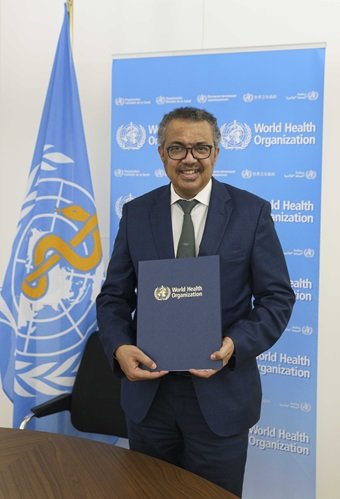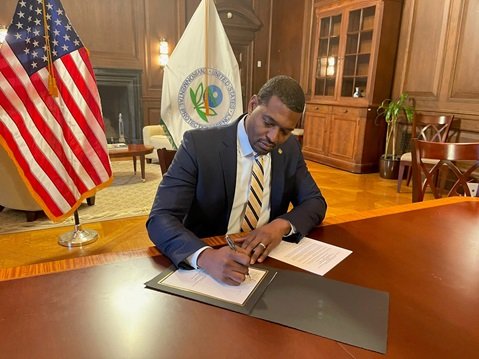 The U.S. Environmental Protection Agency and the World Health Organization (WHO), signed a five year agreement this week Memorandum of Understanding. The agreement continues EPA/WHO collaboration on a wide variety of specific and cross-cutting issues
The U.S. Environmental Protection Agency and the World Health Organization (WHO), signed a five year agreement this week Memorandum of Understanding. The agreement continues EPA/WHO collaboration on a wide variety of specific and cross-cutting issues
environment and health issues, particularly air pollution, water and sanitation, children’s health, and health risks due to climate change. The updated agreement contains exciting new actions on crosscutting topics such as infrastructure.
Environmental justice.
“I am proud to renew EPA’s commitment to working with the WHO to protect the public from the health risks of pollution,” said EPA Administrator Michael S. Regan. “The United States is committed to working closely with WHO, a global
Protecting human health for all is a key priority of the WHO, with a special focus to address the needs and vulnerabilities of underserved and vulnerable communities. This collaboration with WHO has been a great help as we face new challenges due to climate change and the COVID-19 pandemic.
never been more critical.”
EPA’s mission to protect human health and the environment fully aligns with WHO’s charge to lead global efforts to promote health for everyone, everywhere. The WHO estimates that 24% global deaths and 28% among children under 5 years old are caused by disease.
Five of these are related to the environment. People in low- and medium-income countries have the highest disease burden.
“The COVID-19 pandemic has highlighted the intimate links between humans and our environment,” said Dr Tedros Adhanom Ghebreyesus, WHO Director-General. “Addressing those links is essential to prevent diseases, including
Future pandemics to promote health, drive global recovery, and reduce the health risks associated with climate changes, especially for the most vulnerable. WHO looks forward to continuing its longstanding collaboration with US EPA, and to tapping EPA’s
expertise to advance our mission to support countries in meeting the challenges of environmental health.”
WHO and EPA have a long history together in addressing the most pressing public health issues. Over three decades, this cooperation has included work on climate change, indoor and outdoor air quality, children’s environmental health, chemicals
and toxics, water, sanitation, as well as quantifying the environmental burden of diseases.
WHO and EPA will be focusing on the health effects of climate change over the next five-years. The ongoing efforts will address many environmental threats to health caused by climate change, including safe drinking water and clean air. Collaboration
We will continue to work to protect children from toxic substances, especially lead-based paint. 
WHO and EPA have signed a Memorandum of Understanding (MOU) to establish new areas for cooperation. This will allow them to share priorities on cross-cutting issues such as addressing the disproportionate effects of environmental challenges on vulnerable and underserved communities. Protecting
these populations and increasing access to decision-making is at the core of Administrator Regan’s vision for the EPA. WHO’s Triple Billion targets outline an ambitious plan for the world to achieve good health for all. Both EPA
WHO and WHO place emphasis on science in developing policies and programs to address environmental impacts.
WHO also oversees global coordination efforts in response to the COVID-19 pandemic. EPA also contributes to COVID-19 response by registering disinfectants for SARS-CoV-2, and conducting research into antimicrobial products.
Personal protective equipment to ensure that it can be reused. EPA has been working to develop early warning systems by monitoring wastewater for SARS-Cov-2. Both agencies will continue to advance science in order to combat the current pandemic.
Be better prepared for future biothreats
